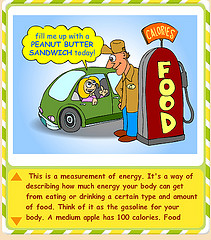Tearing your hair out over how to get your kid to eat anything close to a balanced diet? This article shares some tips from nutrition experts.
If meal time dramas are a common sight in your household, you are not alone. Getting used to meal times, trying new foods, adjusting to unfamiliar textures and flavours is unsettling for many children, especially toddlers.
At the same time, preparing nutritious meals that are left uneaten and constantly having to cajole the picky one to take even one bite can be stressful for parents and caregivers.
Common complaints in providing kids nutrition range from difficulty in introducing new foods to an aversion for certain types, especially green, leafy vegetables, as well as wholemeal varieties like brown rice and wholegrain breads.
Generally, toddlers are resistant to the concept of trying new foods mainly because of fear.
Pressure from parents and force feeding will only make things worse.
Other explanations could be organic causes like oral motor dysfunction which makes it difficult to swallow certain types of food; a gradual assertion of independence and wanting a say in what he eats; peer pressure which leads to choosiness; and perhaps a previous unpleasant experience like choking.
For a child to develop the right eating habits, nutrition experts stress the importance of addressing this problem. Getting your child to eat a variety of foods is important to ensure a well-balanced diet and adequate nutrition.
Unhealthy or improper eating habits that are not corrected will spill over to adulthood which become even harder to change. However parents can take heart, as most children will grow out of this behaviour by the age of six.
Strategies to coax fussy eaters
Let him be the boss – Ask your kid what he wants to eat.
During your next grocery shopping trip, let him take over the trolley and have a say in picking out new things that he is keen to try. If he chooses it, he will at least take a bite.
1.Make it fun – Get him involved in the preparation of the food. Have fun together cutting up the vegetables or fruits into different shapes and sizes. Combine different food with bright colours and make the dish “interesting to eat”.
2.Mix it up – If he shuns the dish once he notices a particular ingredient, try a different way of cooking. Some alternatives include pureeing or mashing and mixing it together with porridge or other types of his favourite food.
3.Encourage, not punish – Load up the praises when he eats well or tries out new food. Even if he rejects it for the first time, do not lash out. Instead, try again a week later and do so in small portions.
4.Adopt a routine – Kids crave familiarity. Plan regular mealtimes and keep to small but frequent meals with snacks in between to supplement their main diet. Examples of healthy snacks include milk, soy bean milk, cheese, fruits, fruit juices, pudding and yoghurt.
Nutrition and Dietetics Services at Mount Alvernia Hospital (Singapore) specialises in nutrition and dietary issues. One-to-one consultation on nutrition is available for both inpatients & outpatients.
Articles Find More Nutrition For Kids Articles


